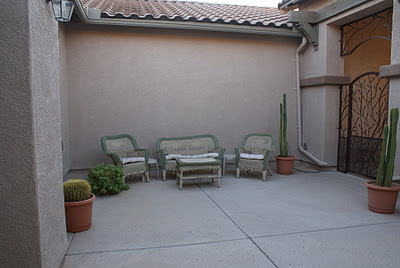10/17/11
 |
| Horse farm east of my house |
We live out in an agricultural area far west of Phoenix, Arizona. Five years ago, there was nothing in this area but horse farms and crops. The area was being built up just as the housing market crashed, and construction has come to a halt here. Our subdivision is surrounded by alfalfa fields, cotton fields, and horse farms.
To the south of our subdivision are alfalfa fields, and to the east are at least 15 horse farms. There are also dairy farms nearby.
 |
| Harvested alfalfa field |
The harvested alfalfa is used as hay for feeding the animals. Alfalfa is a perennial, clover-like plant of the pea family that grows two to three feet high and has purple flowers. I have read that it is possible to cut or harvest alfalfa monthly, but it seems to me that the farmers here harvest the fields every two months. This photo is of a field that is two blocks from my house.
The other two sides of our subdivision are surrounded by cotton fields. There are many more cotton fields in this area than alfalfa fields.
 |
Cotton field
|
In the wild, cotton is a perennial, but farmers have cultivated the plant to grow as an annual shrub that reaches four to seven feet high. The flowers are creamy white.
 |
| Cotton flower |
The flowers turn red before falling off and revealing the formation of a boll.
The boll will mature and pop, exposing fluffy, white cotton.
When cotton is harvested here in late fall, there will be many stray peices of cotton that blow down the roads.
The very green looks of the fields in the above photos are deceptive. All of the fields are heavily irrigated, and if you drive a few miles away, there is nothing but brown dirt.
 |
| Cotton boll |
 |
| Fluffy white cotton |



























